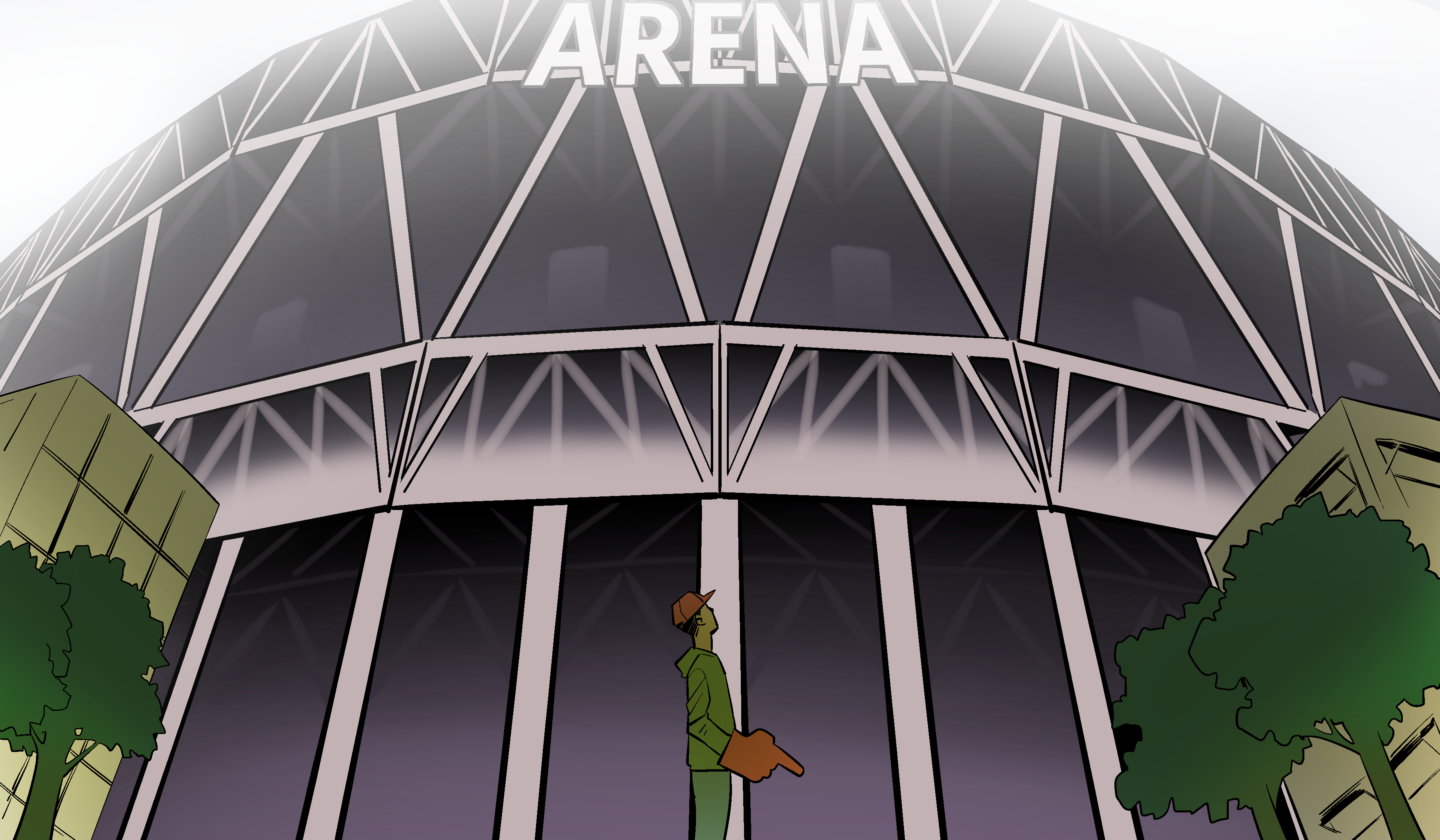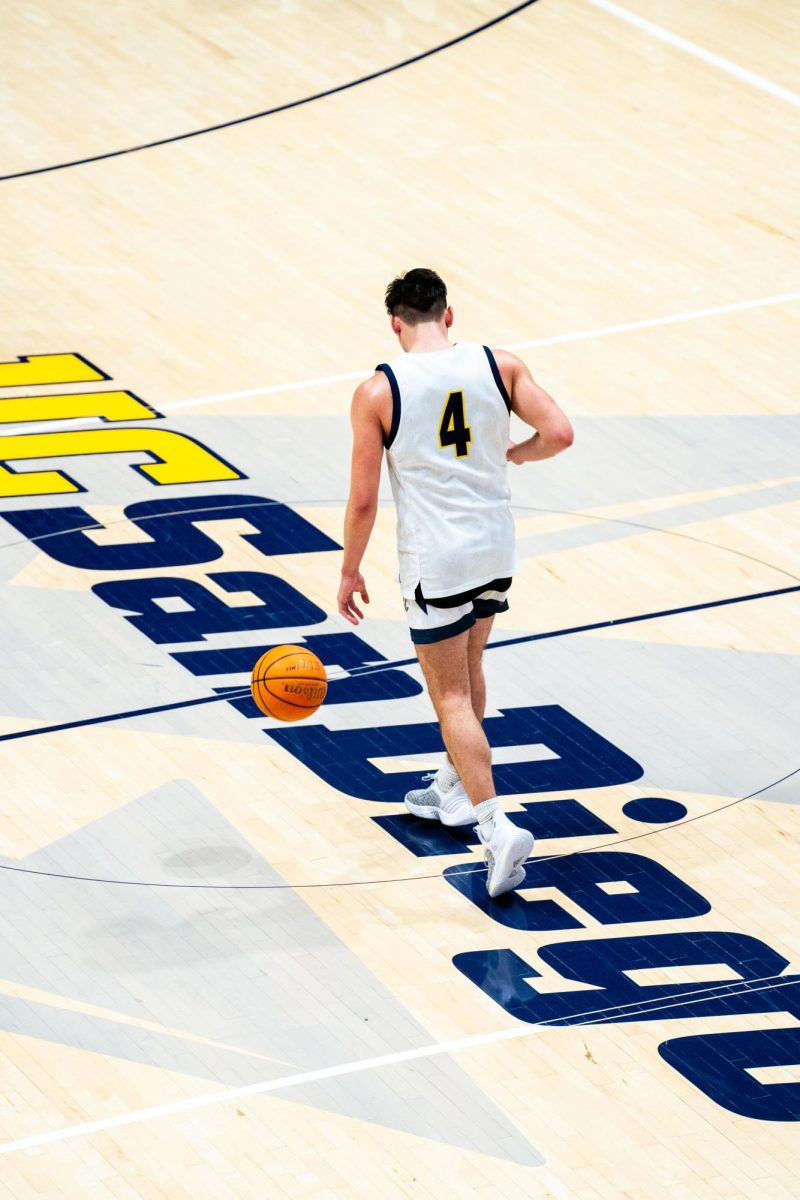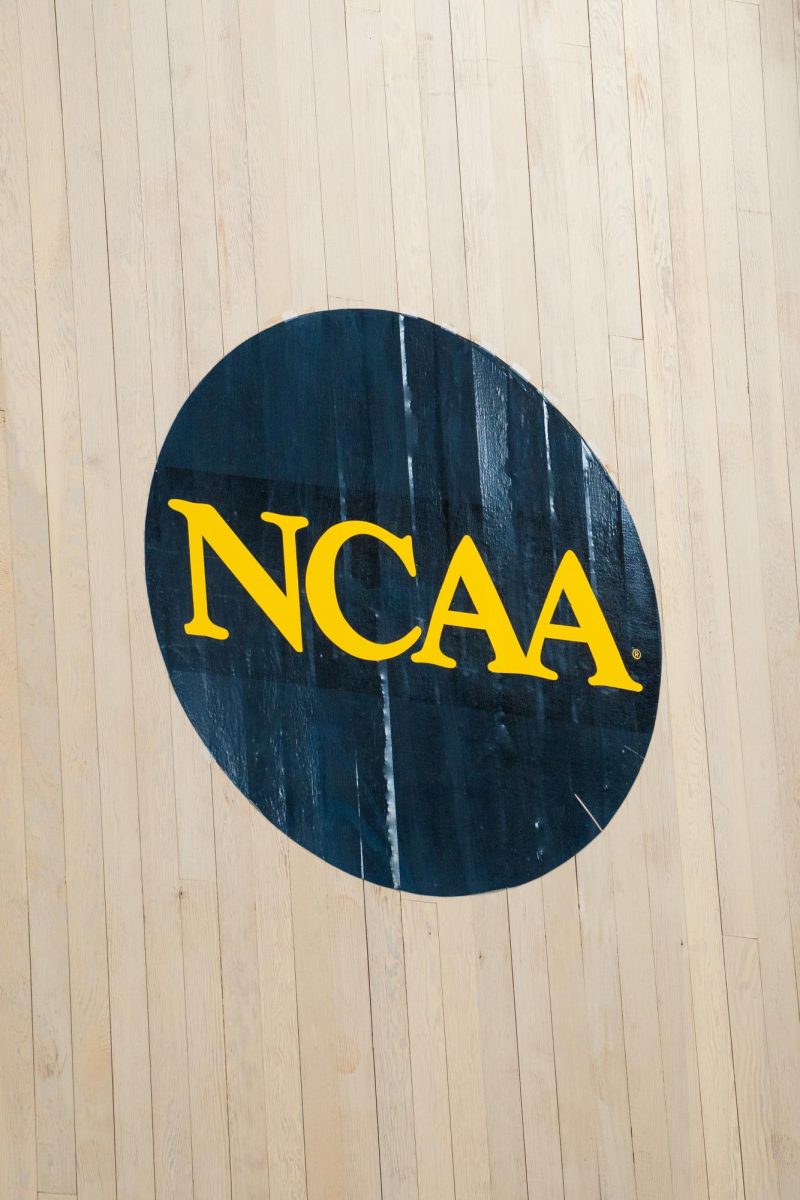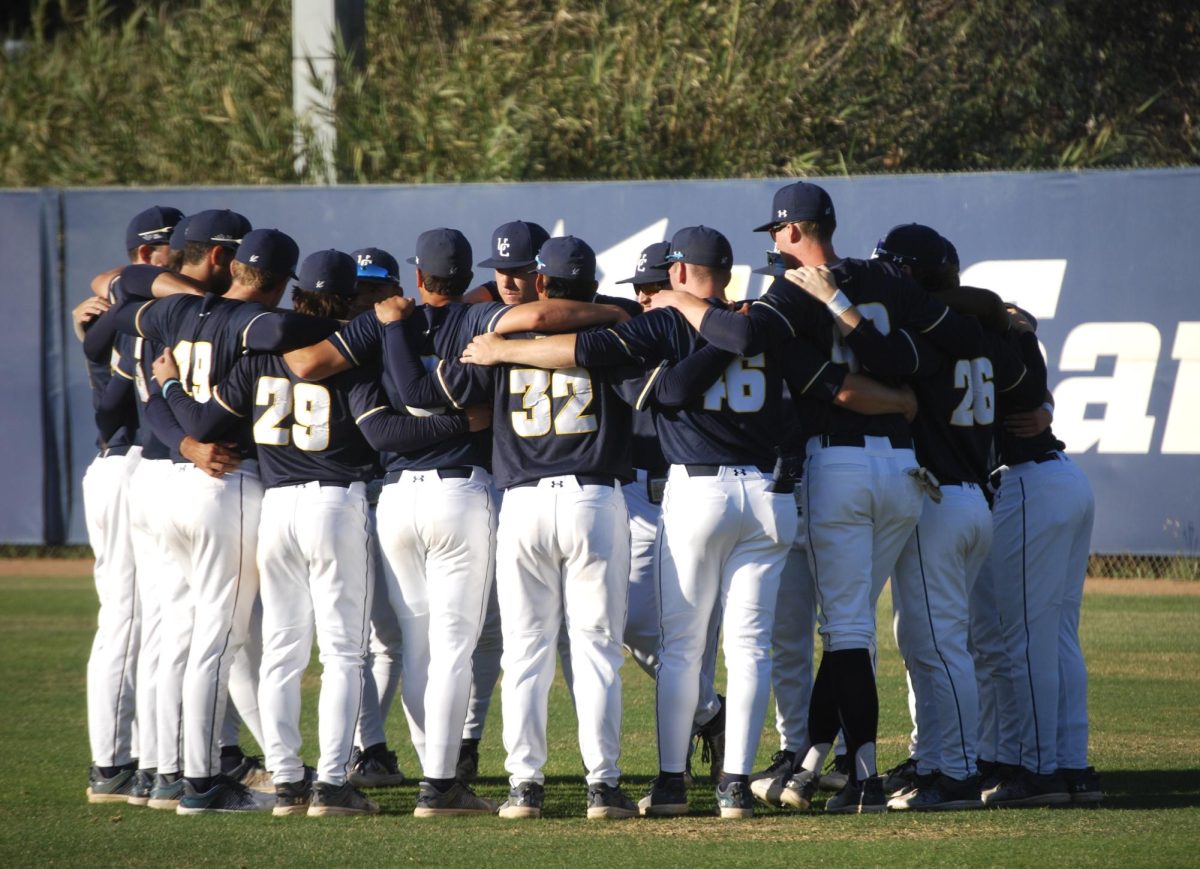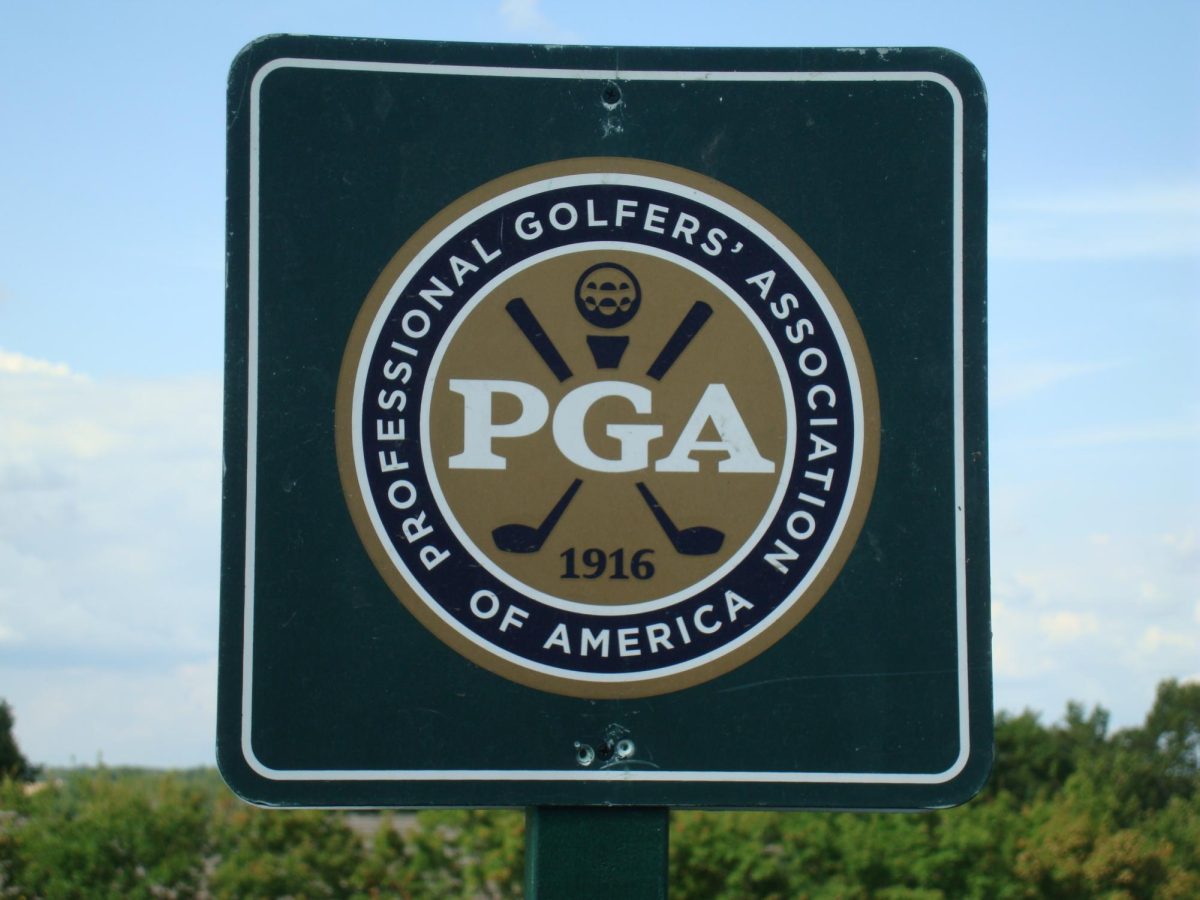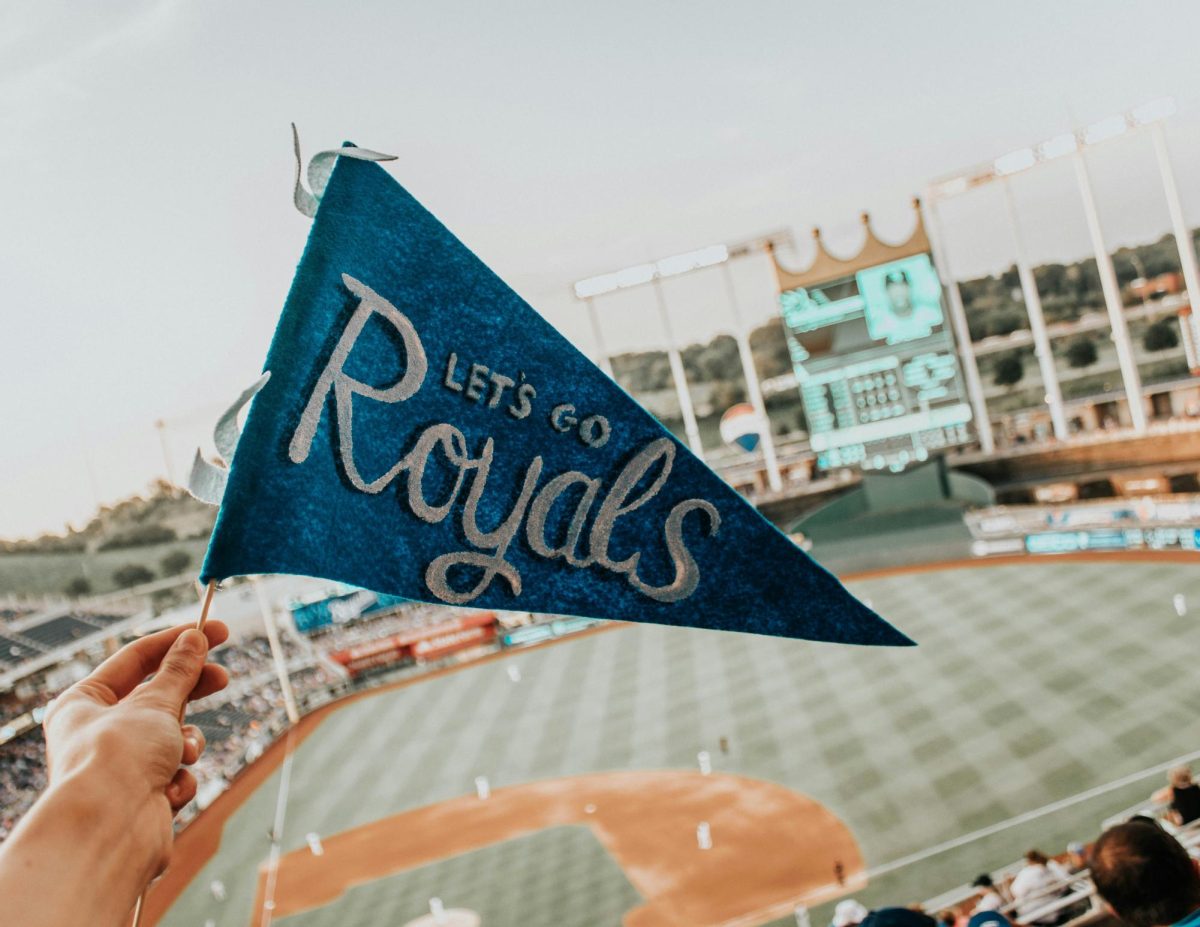At this time one year ago, I was writing about how I’d been swept up by baseball months before Opening Day, along with thousands of other fans, by the San Diego Padres’ Fan Fest at Petco Park.
Now, I find myself writing about the same team and the same stadium, and how that stadium, or at least the parking lots surrounding it, are once again filled with thousands of San Diegans. But this time, the people aren’t diehard baseball fans or excited kids waiting for autographs. And even though there’s still smiling, these smiles aren’t coming out of pure delight. Instead, they’re strained, accompanied by sighs of relief. And they’re behind masks.
Beginning on Jan. 16, UC San Diego Health and San Diego County partnered with the Padres and Petco Park to create a vaccine supercenter in the heart of downtown San Diego.
These efforts are part of a broader nationwide embrace of public-private partnerships involving sports franchises and their communities during the COVID-19 pandemic. Up the I-5 freeway, Disneyland has become Orange County’s first “super distribution site” for the vaccine, and the Padres’ nearest baseball rivals, the Los Angeles Dodgers, have made their stadium available throughout the pandemic as the largest testing center in the United States and now the largest vaccine distribution center.
The Petco Park vaccine distribution center came together in less than a week thanks to coordination with the Padres President of Business Operations Erik Greupner, the executive team at UCSD Health, and the County.
“We set up this entire operation in five days,” Dr. Christopher Longhurst, a UCSD graduate (Class of ‘96) who serves as the chief information officer for UCSD Health and as a member of the executive team planning this vaccine supercenter, said in an interview with The UCSD Guardian. “Teams worked day and night to make this happen.”
Longhurst credited the Padres for providing everything required for the site to operate.
“It wouldn’t have been possible without the Padres partnership,” said Longhurst, “They provided a lot of infrastructure that was incredibly helpful, everything from their existing contracts with traffic flow and security to blanketing the parking lot with WiFi.”
That logistical support is something outside observers may overlook concerning the vaccination effort, but these details proved vital in allowing the site to run efficiently, and the Padres are in a unique position to provide these resources. While traffic flow and security professionals could likely be found from UCSD’s own experience with event planning, without the high-speed internet connection available at Petco Park, for example, medical staff could not access electronic health records without multiple mobile hotspots.
While these benefits are unique in the San Diego area, they are certainly not exclusive to Petco Park. Sports franchises and the venues that host their games are largely similar across the country and would likely be beneficial to vaccine distribution efforts for many of the same reasons the Padres and Petco Park benefitted the vaccination effort undertaken by UCSD Health and San Diego County.
For starters, sports franchises and their players are already active in communities across the country in ways that reflect the values of organizations like UCSD Health, whose goal, as articulated by Dr. Longhurst, is to “serve the underserved.”
“[The Padres] actually help us with a lot of our other efforts, from players visiting hospitalized patients to [the team] helping us in our outreach to underserved communities.”
Petco Park is uniquely situated to allow the Padres to not only reach out to adjacent communities in San Diego but also to bring in those community members to Petco Park through public transportation, an area of COVID-19 vaccine distribution that can be overlooked by those privileged enough to have easy access to private transportation.
“From the get-go we have assumed we would do a walk-through [vaccination] component,” said Longhurst. “Not everybody has personal transportation, so another benefit of the Petco Park site is that it’s at a major public transportation hub, so there’s bus routes and train routes and trolley routes that all let out right [at the site].”
All of these benefits demonstrate just how uniquely valuable a sports franchise and its venue can be to the public as vaccination efforts continue across California and the country.
“It’s not just a big parking lot or open space,” said Longhurst, “You’ve got to put [vaccination centers] in an easy-to-access place that has public transportation hubs and that ideally is already [connected to] partners who have turnkey solutions for security, traffic flow, and WiFi.”
. . . . . . . .
During the pandemic, sports stadiums haven’t been exclusively visited by the public for COVID-related uses, though. Throughout the spring and summer of 2020, during the civil rights protests surrounding the murder of George Floyd, sports stadiums and arenas across the country were populated once again, even though games generally weren’t on display.
Instead, the big draw for famous venues like the Staples Center in downtown L.A. and Fenway Park in Boston was the chance to vote within them. By Election Day, Nathaniel Rakich of FiveThirtyEight reported that at least 39 sports venues had served as polling places across the country. The use of these stadiums wasn’t just part of a public relations stunt either, as the stadiums truly did hold unique attributes that would be quite difficult to replicate, just as they do as vaccination supercenters and mass-testing sites.
“Their massive size means they can process tons of voters at once and still leave space for social distancing, and some of them are even outdoors, which lowers the risk of transmitting the virus,” wrote Rakich. “Plus, they’re just a cool place to vote — especially for fans who haven’t been able to see their favorite teams in person this year.”
While Petco Park did not participate in boosting turnout in this year’s elections, Dodger Stadium did, garnering a visit from California’s then-Secretary of State Alex Padilla in late September. At his visit, Padilla, now the U.S. Senator replacing Kamala Harris, cited how Dodger Stadium was uniquely able to provide open space that allows for social distancing as well as plenty of parking, and he praised the Dodgers for being “the first team in all of Major League Baseball to make this kind of commitment to lend their facilities … to the bedrock of our democracy.”
Padilla’s last point, that the Dodgers were the first team to make their venue a polling place, is one worth exploring. Why isn’t every sports franchise making this service available to their cities? Especially for stadiums that draw upon public funding, which is essentially every major American sporting venue, I’m of the opinion that every stadium should be doing what it can to provide these services to their communities, whose tax dollars often fund their arenas and whose fan dollars line the pockets of their owners.
Stadiums are expensive. A 2019 article from the Berkeley Economic Review outlines the average cost of professional American sports venues, with NFL stadiums costing roughly $1.2 billion to construct, with NBA arenas at $620 million and MLB ballparks at $440 million.
In recent decades, U.S. professional sports franchises have been able to push much of the cost of new venues onto the public’s balance sheet, boosting their own profits at the expense of the taxpayer; in doing so, these franchises and their supporters have argued that their stadiums will provide a public good, largely in the form of job creation or urban economic development.
In the case of Petco Park and San Diego, taxpayers approved construction through the ballot box and ended up footing a bill of just over $300 million, which represents roughly 70 percent of the $474-million stadium, the rest of the funding coming from private investment.
Taxpayers accepted this financial burden with the understanding that “new condos, hotels, and shops nearby would drum up enough new cash to cover the cost of the ballpark,” wrote Lisa Halverstadt in her 2015 article for the Voice of San Diego. The stadium and the consequent development of the blocks surrounding it did greatly revitalize the “dilapidated East Village,” but it did not pay for itself as promised, leading to additional government expenditures to cover the cost.
Using the case study of Petco Park, public funding for stadiums seems to produce a mixed bag, with the tangible downside of enormous price tags seemingly overtaking the economic benefits of the venue.
But then there is the less-tangible upside of creating a space for generations of San Diegans to congregate for games and new areas to live, work, and eat in while uniting to support players from all over the world with fans from all over the county. The community outreach of athletes and sports franchises in increasing access to all the benefits sports can provide young people is another valuable addition that is tough to quantify.
With all of this in mind, it seems difficult to name stadiums a definitive public detriment. If anything, it seems that with the innovations brought about by the COVID-19 pandemic, stadiums across the country can make good on their promises to provide a public benefit by consistently serving the needs of their city’s governments, just as Petco Park is doing with the vital vaccination supercenter, especially while fans stay home to avoid spreading the coronavirus.
. . . . . . . .
Especially because of the unique benefits sports venues can provide in vaccination and testing efforts as well as with voting, there really does seem to be a path to translating the localized successes of the pandemic moment into lasting national change.
But not every city has these success stories to draw from moving forward. Even San Diego, for all of the positivity surrounding the supercenter, could have been without this partnership even with the existence of the Padres and Petco Park, if not for UCSD Health absorbing an undertaking other hospitals in the area refused.
“Some … health systems were [telling the County] ‘We can’t do more than 1,000 [vaccinations per day],” said Longhurst. “Not only did we show it was possible, we showed it was possible in five days. It’s really gotten people pumped up.”
If the Petco Park example, in conjunction with similar efforts across Southern California, is seen as an expansion of what is feasible in other cities around the state and the country, there could be tangible gains made surrounding the widespread inefficiency that has enveloped the vaccine distribution process to date. And sports franchises and their venues seem to have a direct role to play in this potential expansion.
“There’s no doubt in my mind this is the way to do it,” said Longhurst of using Petco Park as opposed to any other site in San Diego. “It would have been far more expensive and time consuming and challenging to staff to have the same volume of vaccines being delivered at [multiple] smaller sites.”
Sports venues are not entirely empty today, as the NBA is pushing through its regular season despite COVID outbreaks forcing teams to postpone games. The NHL is ramping up its regular season as well, with MLB not far behind, though once the NFL playoffs conclude in mid-February, NFL arenas will be free of both players and fans for months. Even with games going on, these sites can still host important public services, especially because the parking infrastructure which surrounds their stadiums is generally so centralized and accessible.
During the election, no professional sports league had every stadium being utilized as a polling place, and even fewer seem to be working as vaccine-distribution or test centers today. That needs to change.
Clearly, communities can benefit from utilizing all of the resources sports franchises can bring to bear, a constant that has remained true since before the pandemic and remains true today. But these benefits can only be accessed if franchises make themselves available to hospitals and local governments, and coordinate these efforts with them.
At the very least, voting, testing sites, and vaccine distribution should be added to the list of public goods that sports franchises and their venues can and should provide their cities with, both during the pandemic and moving forward.
And hopefully, with success stories like the partnership between UCSD Health and the Padres, this theoretically feasible connection will become the reality across the country, helping sports venues get back to providing their intended public service: fostering unity through the community of sports.
Art by Yui Kita for The UCSD Guardian


